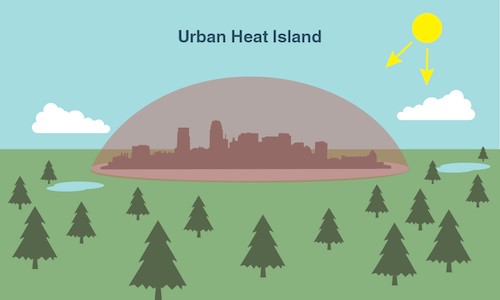7667766266
enquiry@shankarias.in
Prelims (GS I) – Current events of national and international importance| General issues on Environmental ecology, Bio-diversity and Climate Change.
Mains (GS I) – Conservation
Why in news?
A recent study published in Nature Climate Change provides a global perspective on how UHI impacts both heat and cold related mortality.

Implications of UHI
Way forward
Reference